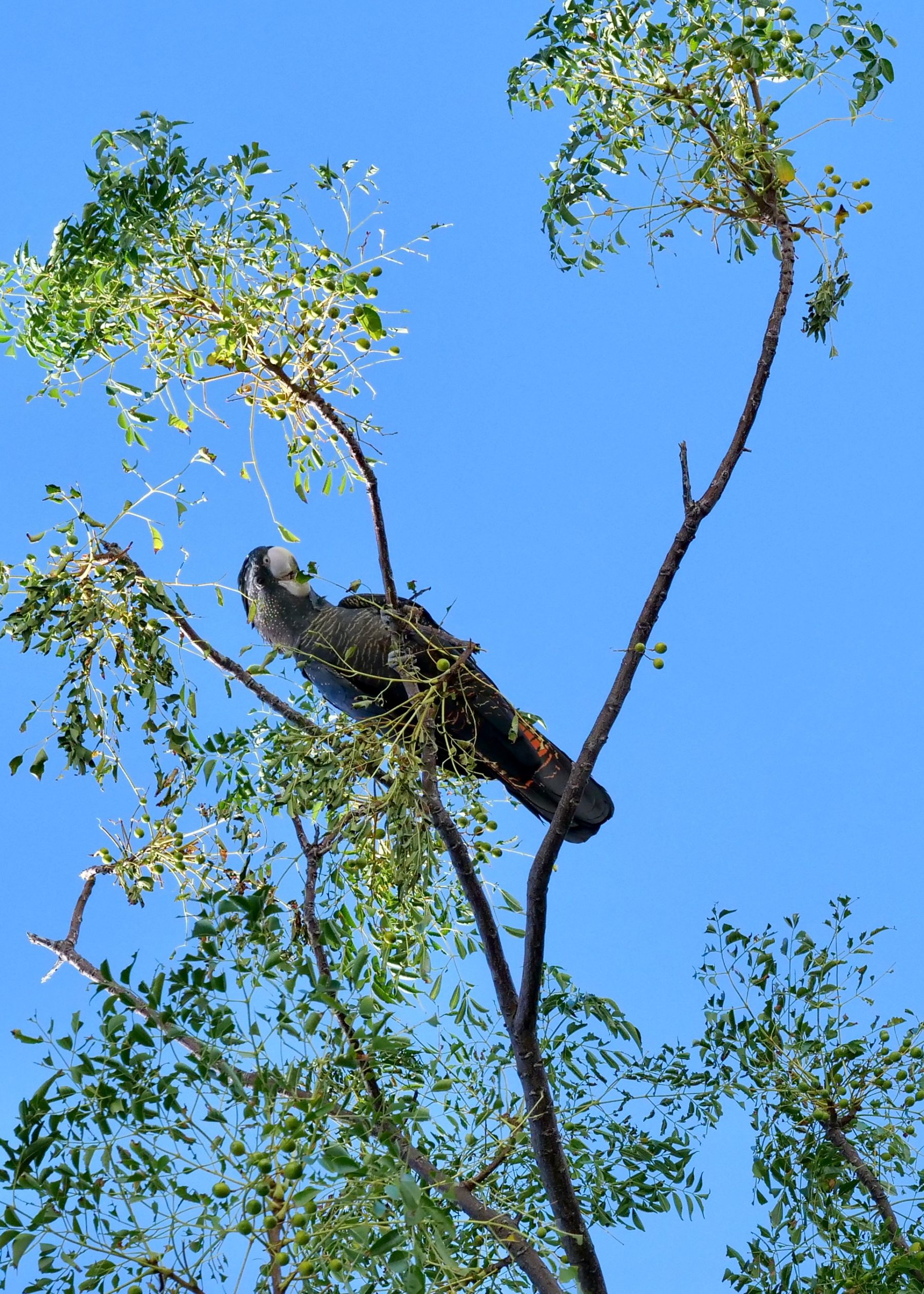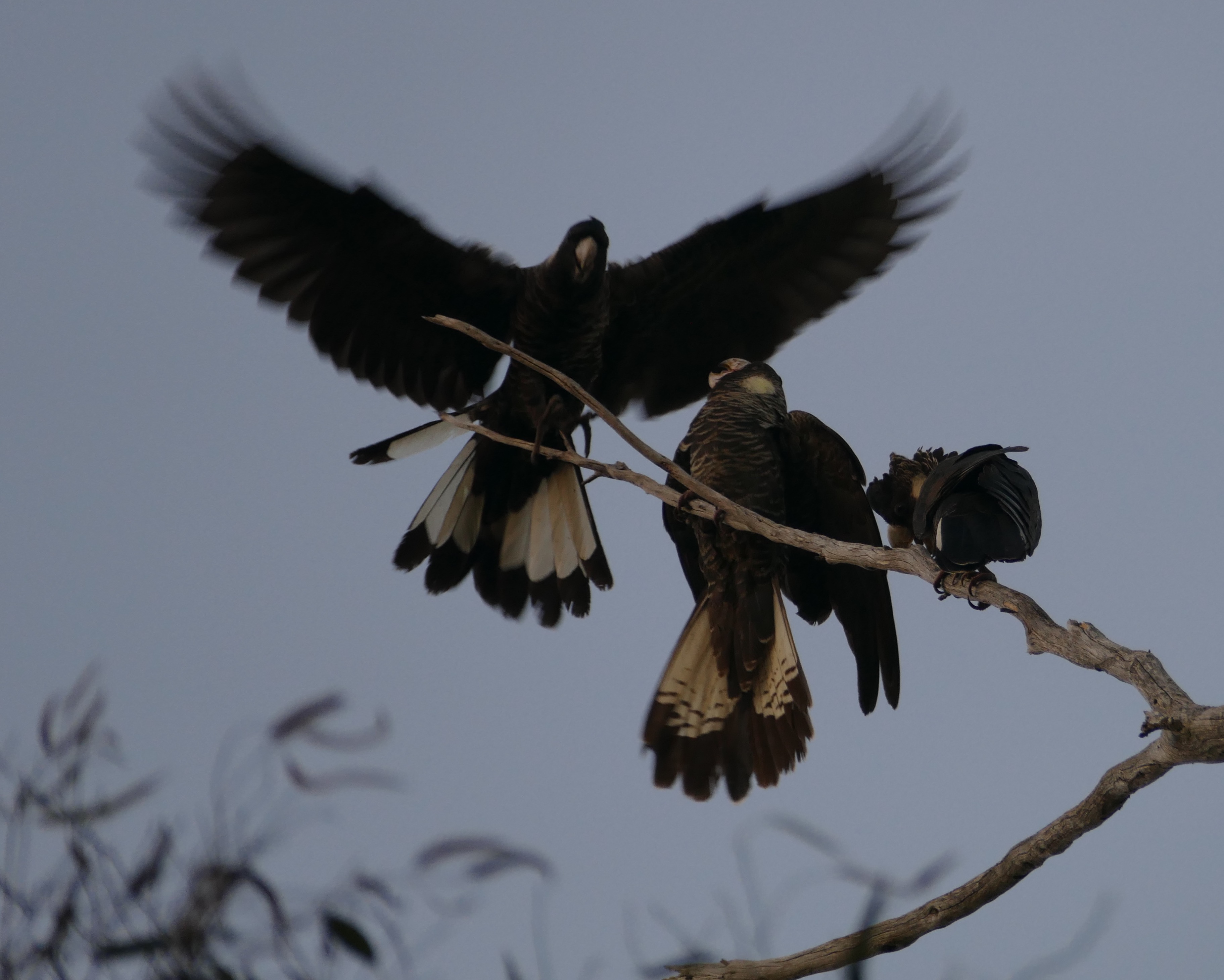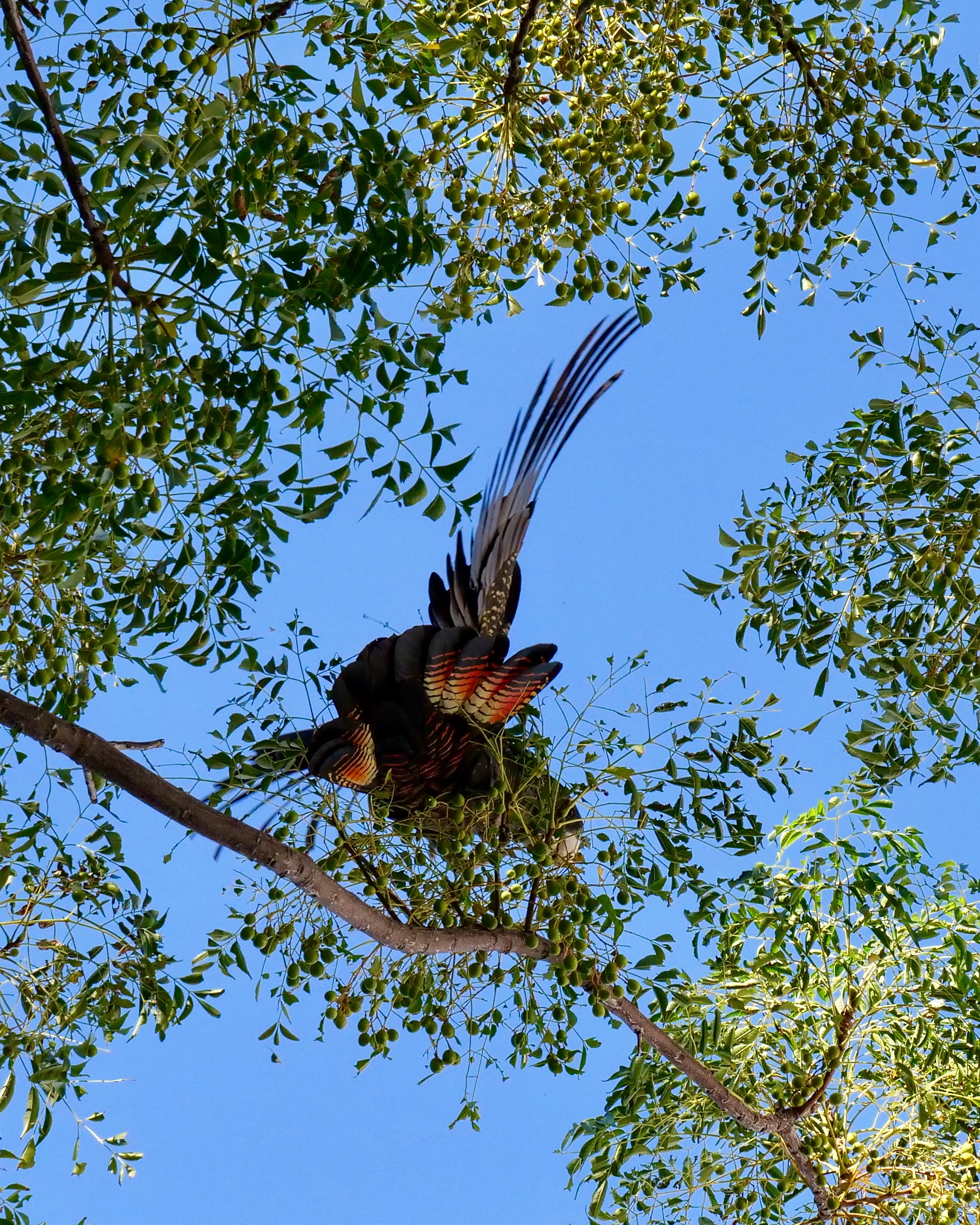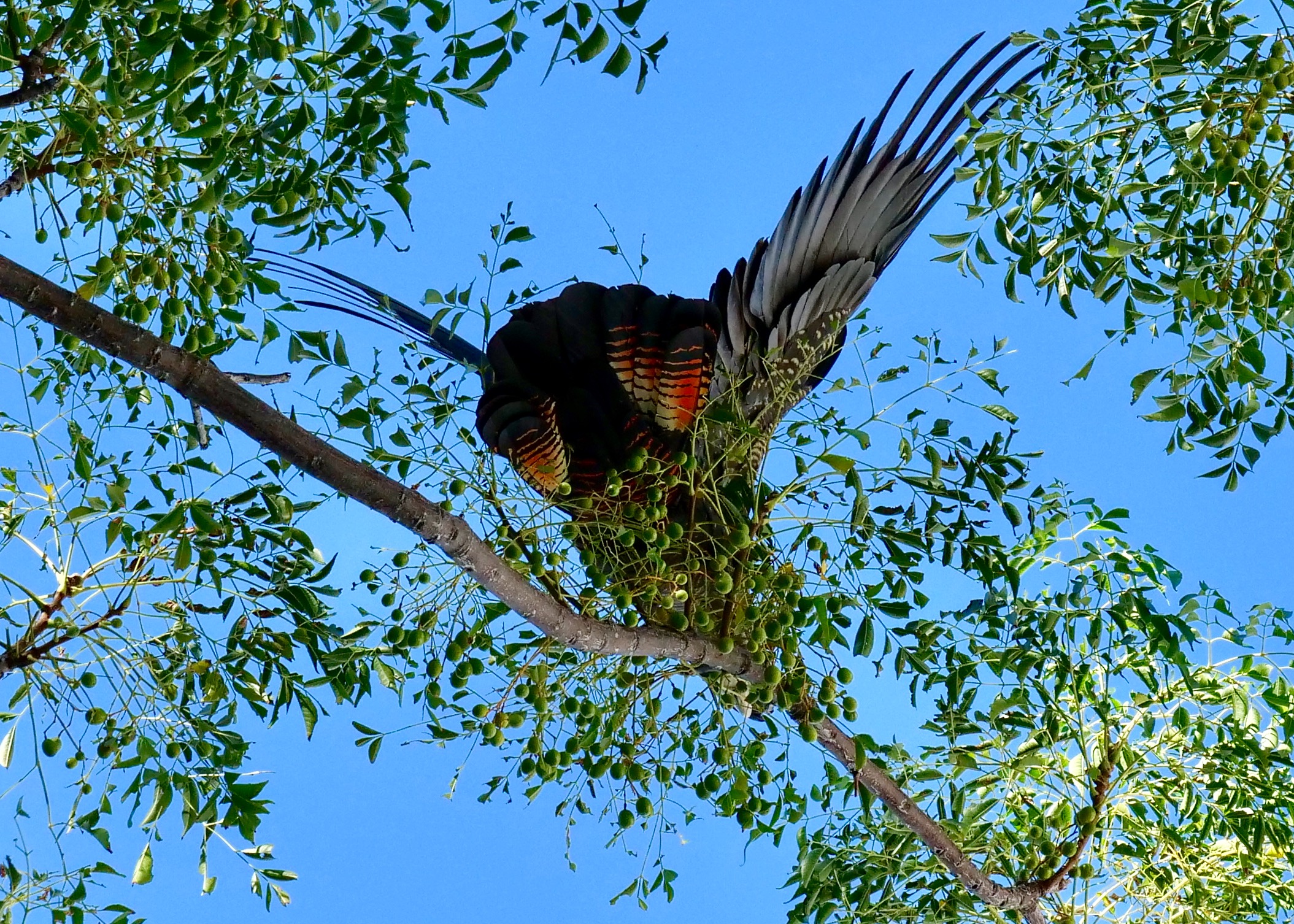Sometimes, for a vulnerable Australian species, an introduced species can prove an unexpected gift rather than yet another threat.
Calyptorhynchus banksii naso – the Forest Red-tailed black cockatoo – is a uniquely southwest Australian sub-species.
It is the one endangered, officially “vulnerable” subset of Red-tailed cockatoos, also known as Banks’ cockatoos.
Until a few years ago, one would never expect to see these magnificent birds in inner-suburban Perth; now, sightings are commonplace.
Only recently have such close encounters between red-tails and humans become possible in streets only minutes away from Perth’s GPO; no loooooong lens was involved in this post – all red-tail photos taken at 120mm.

Unsurprisingly, their vulnerability’s “culprits” include a drastic reduction in suitable habitat, and displacement by introduced species.
( For much more information, click the many available links here. For a brief overview, click this )
However, in recent years ago, the forest red-tails – or “Karrak”, as they were known for many thousands of years prior to 1829 by southwest Western Australia’s original humans – made a very useful discovery.
Widely planted in Perth streets is one of various introduced tree species known as “Cape Lilacs”.
The local favourite is Melia azedarach.
Originally from the Himalayan region, it is known outside Australia as Chinaberry or White cedar.
Perth residents are long-accustomed to noisy and ever-increasing visits by Calyptorhynchus latirostris – Carnaby’s black cockatoo.

This also-superb, white-tailed black cockatoo – a uniquely southwest WA species – is in serious trouble/decline.
It is breathtaking to see and hear as many as 80 Carnabys wheel overhead, when we walk to our local cafe.
We need to remember, however, that they are spending so much more foraging time in suburbia only because so much of their proper habitat is gone…and suburbia is nigh-useless for their nesting needs.
Only this decade did the red-tails begin to arrive in “our” streets.
At first, sightings were infrequent, and the new visitors were shy.
Now, we see them often, and many of the red-tails are no longer the least bit bothered by our presence.
This is entirely due to “the word” now having got right around Red-tail circles that Cape Lilacs make excellent eating.
The red-tails utterly “devastate” the trees – the Cape Lilacs and relevant streets, lanes and footpaths appear tornado-stricken.
Happily, the trees soon recover, “tidy town” streetscapes soon re-emerge, and the red-tails have a reliable “new” food source.
This post’s star is an adult female.

